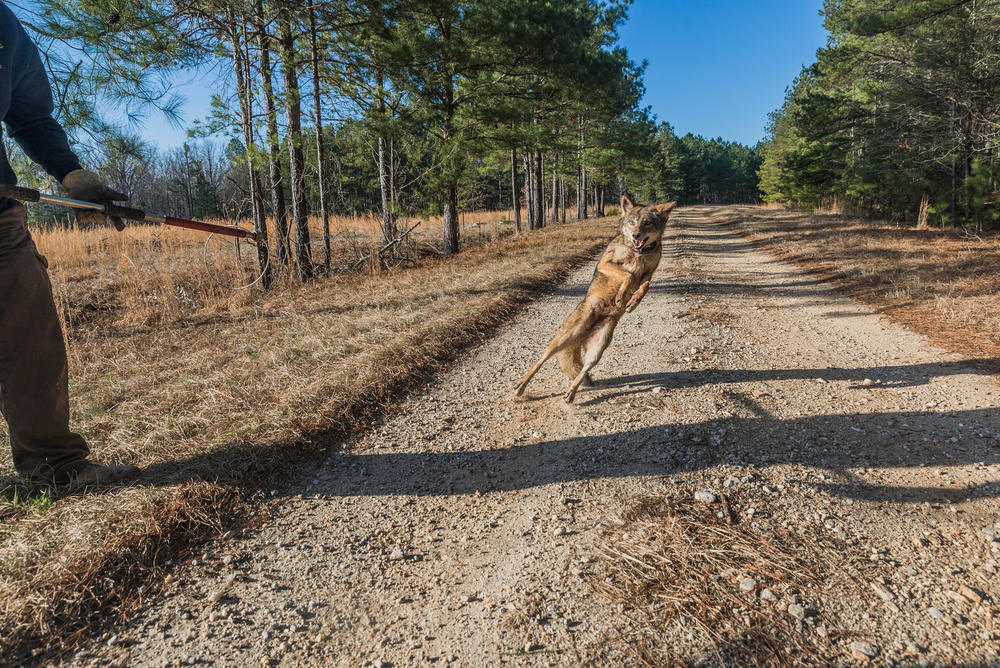Section Branding
Header Content
As Coyotes Change The South, The South Is Changing Them
Primary Content
It's taken about a hundred years for coyotes to move in and fully saturate every corner of the South. As coyotes settled in, they began putting predator pressure on the still-growing white-tailed deer population that it hasn't experienced in a long, long time.
Now, a new analysis of the of coyotes caught and released in the largest study of coyotes in the South suggests that as they change the ecology of deer in the region, deer are in turn changing coyotes.Seeing Coyotes Everywhere? New Science Explains Why
The study was two years in the making. Scientists caught and GPS collared hundreds of coyotes across parts of Georgia, South Carolina and Alabama.
The first results of the study were published in 2018. At the time, Michael Chamberlain of the University of Georgia's Warnell School of Forestry said he and others finally had confirmation of something they had long expected: Southern coyotes are deer hunters.
“By and far white tailed deer were the most important prey resource for resident coyotes,” Chamberlain said of the study results in 2018. And this wasn’t just in hunting season, either. “The constant consistent use of adults throughout the year is something you can't just describe a way to scavenging.”
Now a new paper drawing from the same two year study and published this year in the journal Ecology and Evolution takes the story of deer hunting by coyotes one step further.
Chamberlain and others looked at the all the measurements they made of the bodies of the coyotes they caught in their two years of trapping, everything from head size to leg length to even the size of the ears. They compared that to data taken from earlier studies, too.
They found that compared to western or northern coyotes, southern coyotes have shorter ears and tails.
"Presumably adaptation to hunting in denser, brushier habitats in the east," Chamberlain said.
Southern coyotes are also apparently larger than western animals but smaller on average than northern ones.
When the genes of coyotes from around the country were compared, researchers also found that southern coyotes are relatively isolated genetically from other regions. That isolation could further drive coyote adaptation to the ecology of the South.


